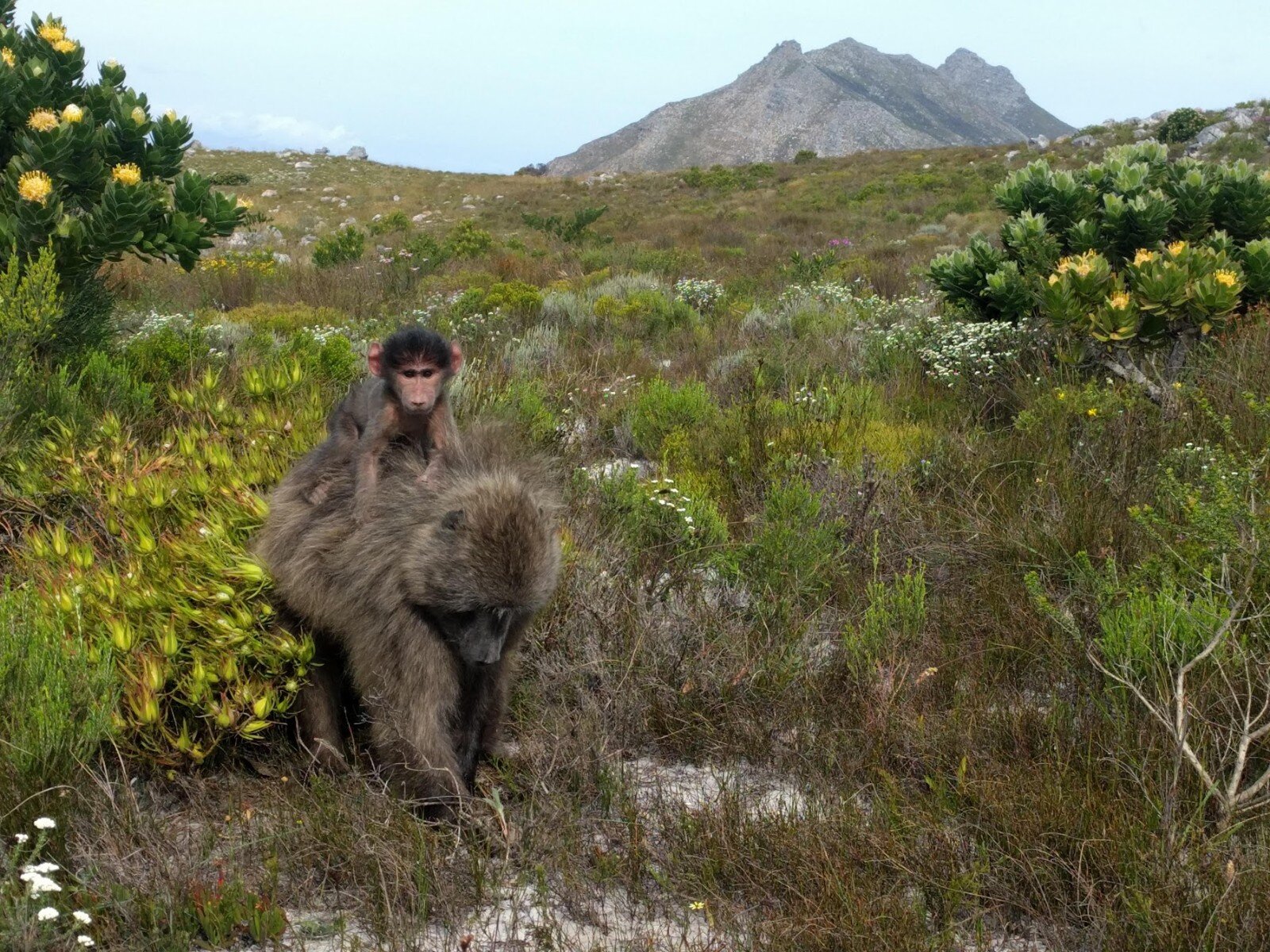A new study from Swansea University and the University of Cape Town provides the first documented evidence of a cessation in urban space use by a female baboon after giving birth: another example of how wild animals are adaptively responding to urbanization.
The study, recently published in the journal Ecology & Evolution, used GPS collars to track the movements of 13 chacma baboons in Cape Town, South Africa.
The data revealed that when one collared female gave birth, she stopped using urban space without any significant change in daily distance traveled or social interactions that would be expected with general risk-sensitive behavior during this time.
While only one baboon gave birth while wearing a GPS-recording tracking collar, the field team observed the same pattern of urban avoidance postpartum in two other non-collared females during the study.
The researchers suggest that such changes in the baboon mothers’ behavior may reduce the risks newborns might experience in the urban environment. It also presents a valuable insight into how species with slow life history strategies, investing in few offspring with extended parental care, need to adapt their behavior to cope with changes due to human activity within their lifetime.
-
A baboon holding an infant. Credit: Dr Anna Bracken.
-
A close-up of an infant. Credit: Charlotte Solman.
Lead researcher Dr. Anna Bracken, a former Swansea University Ph.D. student now based at the University of Glasgow, commented, “Urban environments may be risky for baboon mothers and their infants, and this study provides further evidence of how baboons living near these areas are adapting in response to the threats they face.”
The team’s latest research not only provides an insight into how life history events alter individuals’ use of anthropogenic environments, but also can be used to advise on methods for managing the baboon’s urban space use.
Dr. Andrew King, senior author of the study, said, “These findings have implications for how we manage baboon interactions with human environments. By highlighting how long-lived species with slow life history strategies cope with anthropogenic changes, we can help landowners and decision-makers develop plans to minimize conflict and promote coexistence between humans and wildlife on the urban edge.”
More information:
Anna M. Bracken et al, Postpartum cessation of urban space use by a female baboon living at the edge of the City of Cape Town, Ecology and Evolution (2023). DOI: 10.1002/ece3.9963
Citation:
GPS tracking reveals how a female baboon stopped using urban space after giving birth (2023, May 26)
retrieved 26 May 2023
from https://phys.org/news/2023-05-gps-tracking-reveals-female-baboon.html
This document is subject to copyright. Apart from any fair dealing for the purpose of private study or research, no
part may be reproduced without the written permission. The content is provided for information purposes only.
For all the latest Science News Click Here
For the latest news and updates, follow us on Google News.

